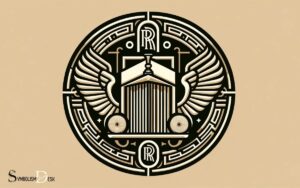What Does Symbolism Mean in English? Images?
Symbolism in English refers to the use of symbols, images, or objects to represent ideas, concepts, or hidden meanings in a literary work, art, or communication.
Symbolism is a powerful technique used by writers, artists, and communicators to convey deeper meanings or abstract concepts through concrete or tangible objects, characters, or colors.
It allows the audience to make connections between the symbol and the idea it represents, creating a richer and more engaging experience.
Symbolism serves as an essential tool in storytelling and expression, offering readers or viewers the opportunity to explore hidden meanings and engage with the work on a deeper level.
The use of symbolism can create a more profound and memorable experience, as people often remember strong images or symbols more vividly than plain text or descriptions.
By incorporating symbolism, authors and artists can elevate their work, leaving a lasting impression on their audience.
Detailed Analysis of Symbolism in English Literature
| Term | Definition |
|---|---|
| Symbolism | The use of symbols to represent ideas or qualities by giving them symbolic meanings that are different from their literal sense. |
| Symbol | An object, character, figure, or color used to represent an abstract concept or idea. |
| Literal Meaning | The dictionary definition or basic meaning of a word, phrase, or situation without any additional interpretation or symbolism. |
| Abstract Concept | An idea or thought that can be understood or interpreted in various ways, often through the use of symbols to convey a deeper meaning. |
| Allegory | A story, poem, or picture that utilizes symbolism to reveal a hidden meaning or message, typically a moral or political one. |
| Metaphor | A figure of speech in which a word or phrase is applied to an object or action to which it is not literally applicable, suggesting a resemblance or analogy. |
| Motif | A recurring theme, subject, symbol, or idea in literature or art that helps to develop or explain a work’s central theme or message. |
| Archetype | A typical example or pattern of something; a symbol that represents a universally understood concept or experience. |
Key Takeaway

Five Facts About: Symbolism in English Literature
The Basics Of Symbolism
Symbolism is a literary device where authors use symbols, be they objects, actions, or words, to convey deeper meaning to their audience.
By using these symbols, writers can add extra layers of complexity to their stories and create a more meaningful experience for their readers.
In this blog post, we will explore the basics of symbolism, the importance of this device in literature, and the different types of symbolism that writers can use to add depth to their work.
Defining Symbolism In Literature
Symbolism is an important literary device used by authors to convey meaning beyond the literal sense of their words. It allows them to create a deeper, more complex story that can be interpreted in many different ways.
When authors use symbols in their writing, they are inviting the reader to join in a collaborative effort of interpretation.
Symbols can be objects, colors, animals, or even actions or events. They are a powerful tool in storytelling because they allow the reader to understand the story on a deeper level beyond the surface plot.
Why Symbolism Is Important
Symbolism brings depth and complexity to a piece of writing that might not be possible otherwise. It allows writers to add layers of meaning and invites the reader to engage in a more active reading experience.
Symbolism adds a richness and nuance to a story that can make it feel more profound, complex, and memorable. It allows readers to uncover deeper meanings and connect with the narrative on an emotional or intellectual level beyond the surface plot. For example, the symbolism of roses in beauty often conveys themes of love, fragility, or the fleeting nature of perfection, depending on the context. By weaving such symbols into a story, authors can evoke resonant imagery that lingers with the audience long after the final page.
Writing without symbolism can often feel flat and one-dimensional, whereas the use of symbols can make the writing more interesting and engaging.
Major Types Of Literary Symbols
There are many different types of literary symbols, each with its own unique features and functions.
Here are the major types of literary symbols that writers may use:
- Archetypal symbols: These symbols have universal meanings and are often drawn from mythology, folklore, and cultural stories. Examples include the hero, the mother, the villain, and the trickster.
- Contextual symbols: These symbols are unique to a particular story and are used to convey meaning within that specific context. Examples include the yellow wallpaper in “the yellow wallpaper” and the river in “the adventures of huckleberry finn.”
- Universal symbols: These symbols convey meanings that are widely recognized across cultures and time periods. Examples include the sun, the moon, the stars, and the sea.
- Literary symbols: These symbols are specific to literature and are often used to represent abstract concepts or ideas. Examples include the green light in “the great gatsby” and the conch shell in “lord of the flies.”
Symbolism is a powerful literary device that can add depth and nuance to a writer’s work. By using symbols, authors can invite readers to engage with their work on a more active level and create a more meaningful experience.
With the different types of symbols available, writers have a wide range of tools to create powerful and memorable stories.
The Different Forms Of Symbolism
Symbolism is a writing technique often used by authors to convey deeper meanings. It involves the use of symbols, objects, characters, or colors to represent abstract ideas or concepts.
Understanding how symbolism works can help readers appreciate a literary work at a deeper level.
We will explore the different forms of symbolism in literature.
Color Symbolism In Literature
Colors are often used as symbols in literature to represent different emotions, feelings, or states of mind.
Here are some common examples of color symbolism in literature:
- Red: Passion, anger, danger
- Blue: Calmness, serenity, sadness
- Green: Growth, nature, relaxation
- Black: Mystery, death, evil
- White: Purity, innocence, peace
Symbolism In Characters
Characters in literature can also be used to convey symbolism. The way they behave, their actions, and even their names can represent abstract ideas.
Here are some examples of characters that have symbolic meaning:
- Atticus finch from “to kill a mockingbird”: Represents justice and morality
- Voldemort from “harry potter”: Represents evil and power
- Holden caulfield from “the catcher in the rye”: Represents teenage angst and disillusionment
Symbolism In Setting
The setting of a literary work can also be symbolic. The time period, location, or weather can often represent a deeper meaning in the story.
Here are some examples of symbolic settings in literature:
- The island in “lord of the flies”: Represents isolation and savagery
- The scarlet letter from “the scarlet letter”: Represents sin and punishment
- The weather in “wuthering heights”: Represents the tumultuous emotions of the characters
Symbolism In Objects
Objects in literature can also be symbolic. They can represent ideas or concepts that are important to the story.
Here are some examples of objects that have symbolic meaning in literature:
- The conch shell in “lord of the flies”: Represents order and civilization
- The glass unicorn in “the glass menagerie”: Represents fragility and uniqueness
- The green light in “the great gatsby”: Represents hope and the american dream
Understanding the different forms of symbolism in literature can help readers appreciate and analyze a literary work on a deeper level.
As readers, we can learn to read beyond what is on the surface and understand the hidden meanings behind the symbols.
What Symbolism Means In Different Literary Works
Symbolism is a literary technique that uses symbols to represent abstract concepts in a work of literature.
Symbolism is commonly used by writers to add depth and meaning to their work, and it can be found in many different genres, including poetry, drama, and novels.
In this blog post, we will explore what symbolism means in english literature, with a focus on its use in four popular works: “the great gatsby,” “to kill a mockingbird,” “lord of the flies,” and “animal farm”.
Symbolism In “The Great Gatsby”
“the great gatsby” by f. scott fitzgerald is a classic novel that explores the decadence and excess of the roaring twenties.
Here are some examples of symbolism in the novel:
- The green light at the end of daisy’s dock is a symbol of gatsby’s hopes and dreams.
- The valley of ashes represents the moral decay of society.
- The eyes of doctor t. j. eckleburg on the billboard are a symbol of the watchful eyes of god.
Symbolism In “To Kill A Mockingbird”
“to kill a mockingbird” by harper lee is a coming-of-age novel that explores themes of racism, prejudice, and justice in the deep south.
Here are some examples of symbolism in the novel:
- The mockingbird is a symbol of innocence and purity, represented by characters such as tom robinson and boo radley.
- The oak tree outside the radley house is a symbol of the mystery and secrets that lie within.
- The mad dog represents the madness and violence that can threaten a peaceful community.
Symbolism In “Lord Of The Flies”
“lord of the flies” by william golding is a story about a group of british boys who are stranded on an uninhabited island and must fend for themselves.
Here are some examples of symbolism in the novel:
- The conch shell is a symbol of order and civilization, representing the boys’ attempt to maintain a sense of community.
- The signal fire is a symbol of hope and rescue, representing the boys’ desire to be rescued.
- The beast represents the primal, savage instincts that can be unleashed when society breaks down.
Symbolism In “Animal Farm”
“animal farm” by george orwell is a political allegory that uses animals to satirize the events leading up to the russian revolution of 1917.
Here are some examples of symbolism in the novel:
- The pigs represent the ruling class of the soviet union, with napoleon representing joseph stalin and snowball representing leon trotsky.
- The windmill is a symbol of the corrupting influence of power, as the pigs use it to manipulate and control the other animals.
- The raven, moses, represents organized religion, and how it can be used to pacify and control the masses.
Symbolism is a powerful tool that writers use to convey deeper meanings and themes in their work. By understanding the use of symbols in literature, we can gain a greater appreciation for the complexities of the human experience.
Symbolism And The Reader
Symbolism is a literary device in which an author uses one thing to represent something else. It is often used to convey complex ideas or emotions in a meaningful and nuanced way, but how does symbolism impact the reader’s interpretation of a text?
Let’s dive into the topic below.
How Symbolism Impacts The Reader’S Interpretation Of A Text
When an author uses symbolism, it adds layers of meaning to a text and can impact the reader’s interpretation in a few ways:
- It can enhance the emotional impact of a text, as symbols are often chosen to represent complex emotions or ideas that cannot be expressed through words alone.
- It can add depth to characters, settings, and themes, making a text more interesting and engaging for the reader.
- It can encourage the reader to read more thoughtfully, looking for hidden meanings and connections between different symbols throughout the text.
Analyzing Symbolism In Literature
Analyzing symbolism in literature can be a rewarding experience for readers. It helps to deepen their understanding of the text and its underlying themes.
Here are some key steps to analyzing symbolism in literature:
- Look for recurring symbols or images throughout the text.
- Consider the context in which these symbols appear and the emotions or ideas that they seem to represent.
- Pay attention to how characters interact with the symbols and how they change over the course of the text.
- Think about how the symbols relate to the larger themes of the text and what they might be trying to convey to the reader.
The Benefits And Drawbacks Of Using Symbolism In Literature
While symbolism can add depth and meaning to a text, it also has its drawbacks. Here are some benefits and drawbacks of using symbolism in literature:
Benefits:
- Adds depth and complexity to themes, characters, and settings.
- Encourages readers to read more thoughtfully and deeply, looking for hidden meanings and connections throughout the text.
- Can convey complex emotions or ideas that cannot be expressed through words alone.
Drawbacks:
- Can be confusing or difficult to understand, especially if symbols are not clearly defined or their meanings are unclear.
- Can be overused or forced, which can cheapen the impact of the symbolism.
- Can distract readers from the plot or characters of a text if they are too focused on deciphering the symbols.
Symbolism adds a layer of meaning and depth to literature that can enhance the emotional impact of a text and encourage readers to think more deeply about its themes and characters.
However, it should be used thoughtfully and clearly to avoid confusion or distraction for the reader.
Are the Symbols in Incantations Used for Symbolism or Practical Purposes?
The symbol meaning in incantation: magical energy plays a significant role in both symbolism and practical purposes. These symbols are not only aesthetic representations but also hold deeper meanings that invoke specific energies. Incantations utilize these symbols to connect with the mystical realm and harness the desired magical energy for various purposes, be it protection, healing, or manifestation.
FAQ About What Does Symbolism Mean In English
What Is Symbolism In Literature?
Symbolism in literature refers to the use of symbols to represent ideas, themes or characters in a creative way.
What Are The Common Symbols In Literature?
Common symbols in literature include animals, colors, seasons, water, fire, and objects that represent emotions, ideas, or concepts.
Why Is Symbolism Important In Literature?
Symbolism is important in literature as it adds depth, meaning, and complexity to the text. It helps the readers understand the hidden meanings and themes behind the story.
How Do You Identify Symbolism In Literature?
One way to identify symbolism is to look for repeated images or objects that have a deeper meaning than their literal sense. Analyzing the context and themes of the text can also help identify symbolism.
What Are The Benefits Of Using Symbolism In Writing?
Using symbolism can add layers of meaning, emotion, and complexity to the writing, making it more engaging and memorable. It can also help writers convey abstract or complex ideas more effectively.
Conclusion
Symbolism is a powerful tool in the english language that enables writers to express their ideas seamlessly.
From literature to visual arts, symbolism plays a vital role in conveying hidden meanings that are not evident at first glance. Symbolism deepens the reader’s understanding of the text, making it more interesting and engaging.
Through the use of symbolism, writers can evoke emotions, create powerful imagery, and convey their message in a subtle and nuanced manner.
As we have seen, symbolism is all around us, and understanding its purpose and significance can enhance our appreciation of the art forms we enjoy.
Symbolism is a literary device that allows writers to communicate complex ideas in a creative, powerful, and thought-provoking way.
It is a valuable asset in english language and literature and will continue to inspire readers and writers alike for generations to come.






